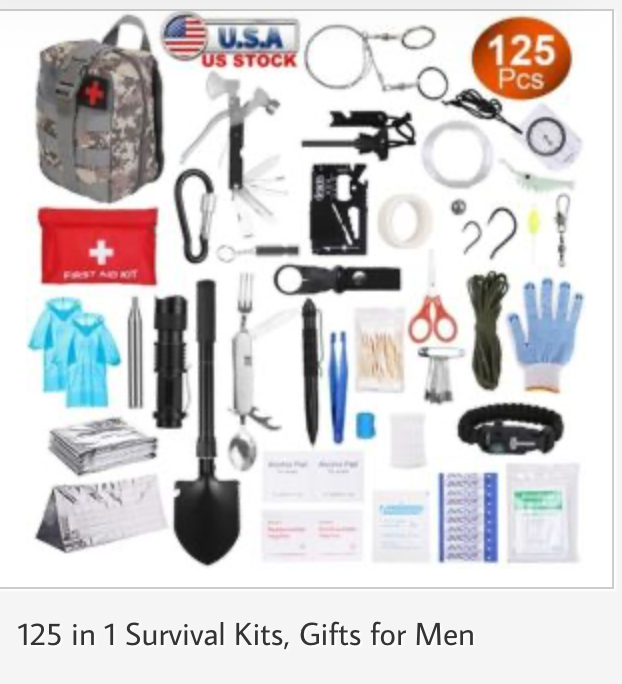When disaster strikes—whether it’s a hurricane, tornado, flood, or extended blackout—the world around you can change in an instant. Everyday conveniences disappear, familiar routes become impassable, and essential services may be unavailable for days or even weeks.
At KokosEmergencyProducts.com, we help families prepare not just for the moment disaster hits—but for the weeks that follow. If you’re forced to evacuate or shelter in place for 1 to 4 weeks, here’s what you can expect and how to be ready.
1. Blocked Roads and Fallen Trees
After a major storm, fallen trees and debris are common. Roads can be blocked, and if you live in a housing development with limited exits, you might find yourself trapped until crews arrive.
Tip:
- Keep a hand saw, hatchet, or compact chainsaw in your emergency supplies.
- Park your car in an open commercial lot (within walking distance of home) before severe weather arrives to reduce the chance of it being trapped or damaged by trees.
2. Emergency Responders May Not Reach You
In large-scale disasters, Police, Fire, and EMS may not have immediate access to your area. Roads may be flooded, blocked, or unsafe.
Be self-reliant:
- Keep a first aid kit and basic medical supplies on hand.
- Make sure every family member’s In Case of Medical Emergency Form is completed and visible for responders.
3. Power Outages and Blackouts
Electricity often fails first—and may stay out for weeks. When power is gone, streetlights and traffic lights stop working.
Expect:
- Dangerous intersections—treat all as four-way stops.
- Traffic delays and accidents due to confusion and stress.
- No refrigeration, heating, or air conditioning at home.
Prepare:
- Keep flashlights, lanterns, and extra batteries ready.
- Invest in a generator or solar power system for backup energy.
4. Navigation Challenges and Lost Landmarks
Strong winds and flooding can blow away road signs and destroy landmarks. Even areas you know well may look unrecognizable.
Tip:
- Download offline maps ahead of time.
- Keep a printed map or road atlas in your vehicle and home emergency kit.
5. Increased Stress and Unsafe Driving
Everyone is under pressure during a crisis. Short tempers, exhaustion, and confusion make driving dangerous.
Stay calm and alert:
- Drive slowly, follow emergency detours, and be patient.
- Avoid unnecessary travel if possible.
6. Closed Shops and Limited Supplies
Without electricity, stores and restaurants will close. Even open shops may run out of supplies within hours.
Plan ahead:
- Store non-perishable food, bottled water, and fuel.
- Keep cash on hand—credit and debit systems may be down.
7. Communication Breakdowns
When networks fail, you may lose access to cell service, Wi-Fi, and even local radio.
Solutions:
- Have a battery-powered or crank radio for updates.
- Keep walkie-talkies or two-way radios to communicate locally.
- Conserve battery life on mobile devices by limiting use.
8. Fuel Shortages and Travel Delays
Gas stations can’t pump fuel without electricity, and those that can will have long lines and limited supply.
Tips:
- Fill your tank before the storm.
- Keep extra fuel containers safely stored.
- Factor in detours, flooded roads, and bridge closures—you may need more gas than usual.
9. Stranded Vehicles and Road Service Delays
If your vehicle breaks down, roadside assistance may be unavailable or overwhelmed.
Be prepared:
- Keep basic tools, jumper cables, tire inflator, and blankets in your car.
- Stock water, food bars, and emergency supplies in case you must wait for help.
- Remember: your car may be your only shelter.
10. Don’t Forget Your Pets
Pets have needs too—food, water, and comfort. In an emergency, shelters may not accept animals.
Include pets in your plan:
- Have a pet emergency kit with food, medications, and carrier.
- Keep copies of vaccine records and ID tags in a waterproof bag.
11. Familiar Landmarks May Be Gone
Natural disasters can reshape entire neighborhoods. Trees, buildings, or signs that once guided you could be destroyed.
Tip:
- Always have a designated meeting point for your family.
- Practice multiple evacuation routes before disaster season.
Final Thoughts
Emergencies are unpredictable, but your preparation doesn’t have to be. With foresight and the right supplies, you can protect your family and maintain stability through the chaos.
At KokosEmergencyProducts.com, we provide the gear you need—from power solutions and sanitation supplies to shelter, food, and communication equipment—to help you weather any crisis.
Because when the unexpected happens, being ready means staying safe.
🔑 Suggested Keywords:
emergency preparedness, evacuation planning, shelter in place, power outage survival, emergency road safety, disaster response gear, blocked roads, fallen trees, fuel shortages, emergency supplies, blackout preparedness, storm evacuation tips, survival planning


